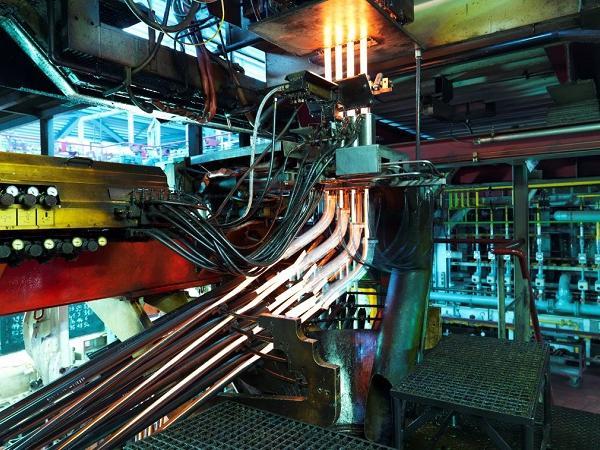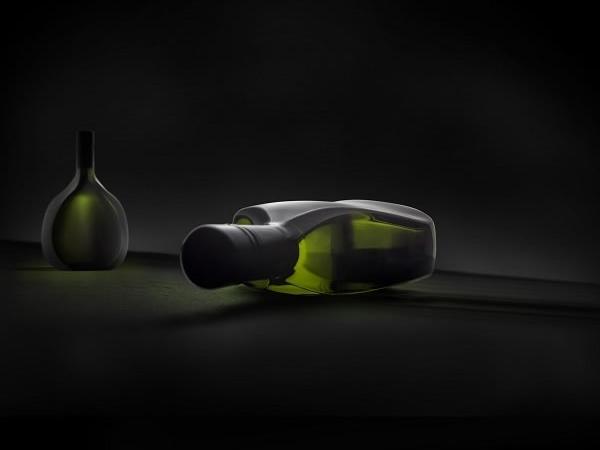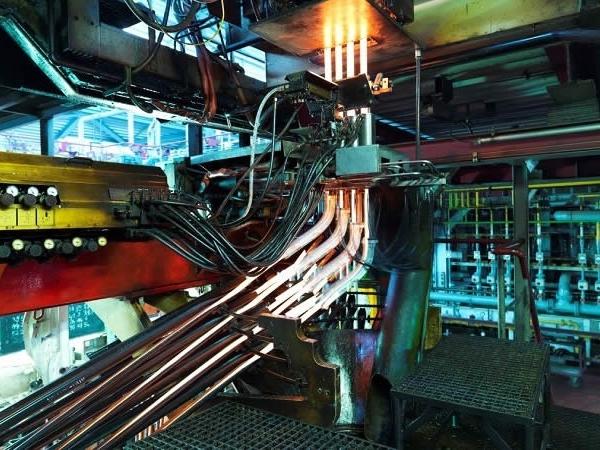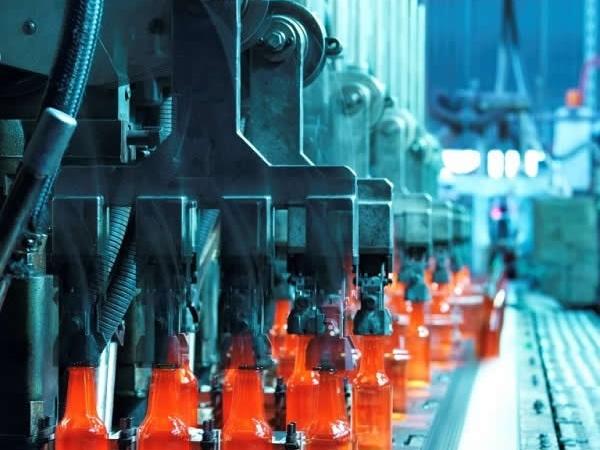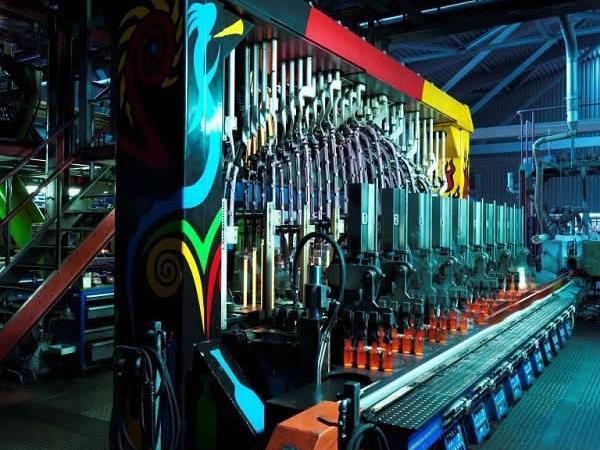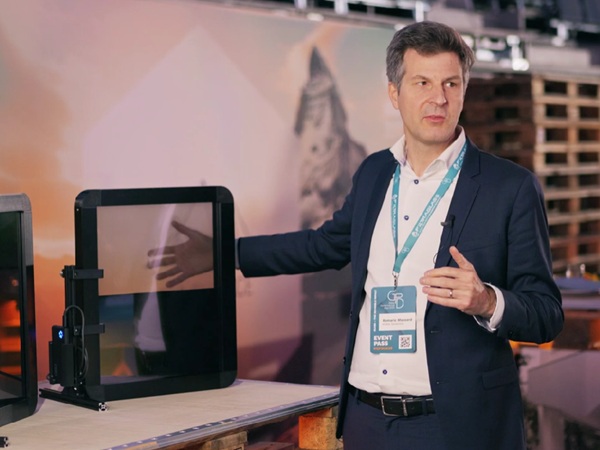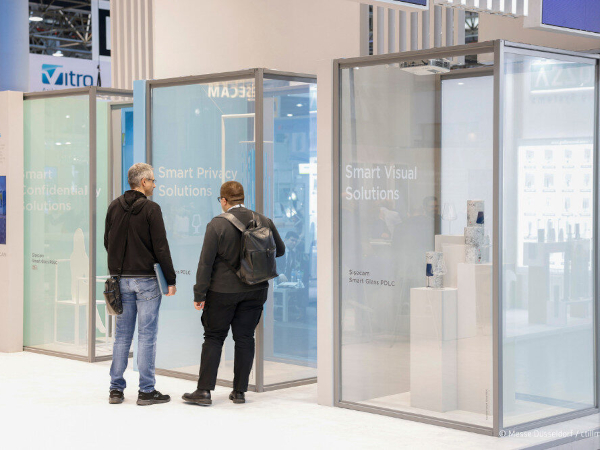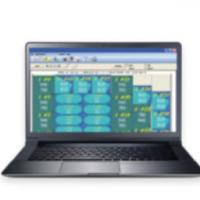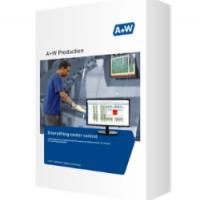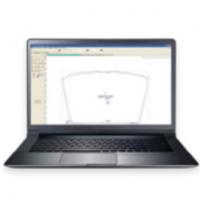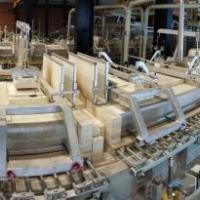Glass is a popular and indispensable packaging material for food and beverages of all kinds. Current product trends and innovations in production will be presented by manufacturers at glasstec 2018 in Düsseldorf from 23 to 26 October 2018.
Glass containers are by far the most hygienic and environment-friendly receptacles for food and beverages. Moreover, as a packaging material, glass is unparalleled in its ability to preserve the taste of the product – and, of course, bottles of all sizes allow for unique and beautiful designs.
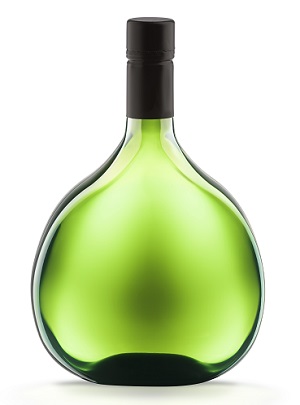
(Photo: Haus des Frankenweins Frankenwein-Frankenland GmbH)
The German glass container industry is undoubtedly one of the most innovative players in the glass industry.
It also uses a large proportion of recycled glass and has a high level of energy efficiency in its manufacturing processes, so that it clearly meets the need for sustainability.
At the same time glass businesses respond flexibly to new trends and requirements. So what are the latest innovations and developments in the glass industry? glasstec 2018 in Düsseldorf has the answer.
A festive dinner in a smart restaurant would be incomplete without delicate wineglasses and a fine bottle of wine on the table.
Container glass is just as much part of our daily lives as clothes and other day-to-day items – and in fact not just in the form of glasses, bottles and food containers.
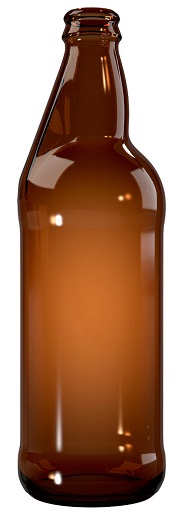
(Photo: Owens Illinois)
The German glass industry also produces thousands of different containers for the cosmetics industry, the pharmaceutical industry and numerous other applications.
Moreover, many container glass manufacturers are global players, and are present not only in Germany, but also in other European countries and in the United States, making a wide range of glass jars, colourful vases, sterile medicine phials and artistically designed perfume flacons.
Glass containers fulfil a wide range of different requirements. They can convey a specific image through their shape, they can make statements, and they are hygienic.
Food and beverages packaged in glass retain both their taste and freshness, as glass containers do not pass on any taste or impurities to their contents.
This special quality is immensely important, particularly in the food industry, and experts therefore describe glass as inert.
It’s what makes this material unique, and it’s a quality which consumers clearly value.
According to a European-wide study commissioned by the European Container Glass Federation, glass packaging is greatly appreciated throughout society because it preserves the taste of the content, is healthy and does not harm the environment.
From a luxury product to an everyday item – the victory of glass containers
Container glass can look back to a long and indeed eventful history. Small flacons could be found in the tombs of the earliest civilisations, yet the manual production process remained highly complex until the late Middle Ages, so that glass was reserved for the more privileged members of society.
It was exclusively used for luxury goods such as oils, essences and perfumes, and people did not begin to fill it with drinks until much later, when production became more efficient with the advent of progressive glassblowing techniques.
17th-century Italy stands out especially with its artistic glass manufacturing, continually surpassing itself in the production of carafes, bottles and glasses.
The final victory of container glass came through industrialisation in the 18th and 19th centuries, and it has been marked by continuous improvements in production and shape to the present day.
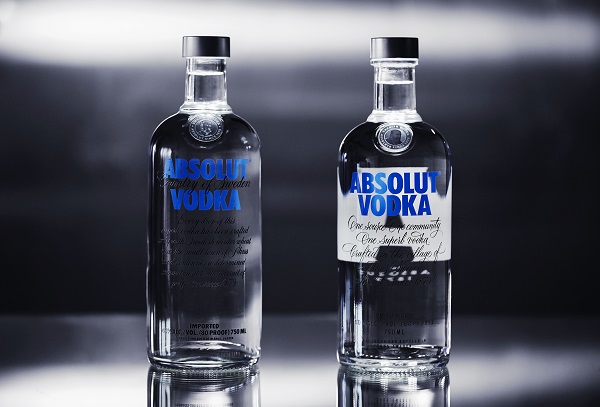
(Photo: Absolut Company Pernod Ricard)
The German container glass industry: innovative, creative and efficient
Today’s demands on the production and shape of container glass are focusing increasingly on individuality and specific designs. Production quantities are smaller, as is the weight of each bottle, yet the containers are of a high quality while also meeting climate change targets.
Another element that has substantially impacted manufacturing processes is the responsible use of resources through recycling.
Paradoxically, the container glass industry has been increasingly impacted by competition from PET bottles, forcing it to find solutions which are now also important to the end customer.
Furthermore, this focus on the hygienic and inert qualities of glass has been accompanied by an increasing awareness of the environmental dimension, with images of gigantic swathes of plastic waste in the world’s oceans, causing painful deaths to fish and birds.
So the container glass industry is vehemently working on ways to modify its products. It does so by adding the largest possible proportion of recycled glass, achieving smart savings in weight, setting up sophisticated supply chains and creating stylish designs, all aimed at giving it a contemporary image.
The success of these endeavours can be seen, for instance, in the 2017 German Packaging Award which went to Wiegand-Glas for a new youthful design of the traditional Bocksbeutelwine bottle used for Franconian wine – a highlight created in a joint project between the designer Peter Schmidt and the Franconian Winegrowers’ Association.
The company is equally innovative in its contemporary and efficient production process, with its energy recovery from hot waste gas which allows so-called pre-heating technology and therefore saves 10 to 15% in primary energy.
The melting temperature required for processing can be reached much faster, leading to a higher base temperature and thus a higher daily melting capacity.
Another successful company with a similar design focus and environmental awareness is O-I (Owens-Illinois). Their beer bottles made them the first glass packaging company anywhere in the world to receive gold certification for material health under the Cradle-to-Cradle® standard.
In this context, it is also worth mentioning the MyPour design, which targets the growing sector of craft and gourmet beer brewers. The asymmetrical bottleneck is diagonal to the rest of the bottle, making it possible to control the head of foam. Depending on the rotation and angle of the bottle, the pourer can influence the way the beer runs into the glass.
Weighty benefits of losing weight
The argument that is often put forward by consumers is the weight of a glass bottle – a criterion which can easily diminish any environmental awareness, in favour of PET bottles. However, this criticism has long ceased to be relevant.
Thanks to light glass technology, the container glass industry is in a position to reduce the weight of different types of glass packaging by up to 40%. A one-litre German Hock bottle, for instance, now only weighs 345 grams, compared with 600 grams – nearly twice as much – 40 years ago.
And yet this has not diminished the strength of the bottle, as optimised design has made it possible to achieve a more uniform wall thickness. It’s an advantage that makes such bottles much lighter, although their lower weight also leads to substantial savings in raw materials and energy, optimises handling and reduces transport costs.
Waste glass creates sustainability – and glass recycling is hip
One unbeatable benefit of a glass bottle is its double potential in terms of container recycling, as it can be refilled up to 50 times before being recycled as waste glass and then fed back into the production process. At the moment the average proportion of “waste” glass is around 60%, and in fact up to 97% for the less popular green glass.
Glass can be melted down any number of times and turned into new high-quality glass packaging without compromising quality. Moreover, the level of social acceptance is unparalleled for glass recycling. Germany alone has around 300,000 waste glass containers, which collect about 2 million tonnes of waste glass per year.
In 2014 the recycling rate was 89%. Yet when we throw our bottles into the relevant recycling container, we may not be aware that one tonne of recycled glass saves over 300 kg of carbon dioxide emissions in the production of new glass packaging.
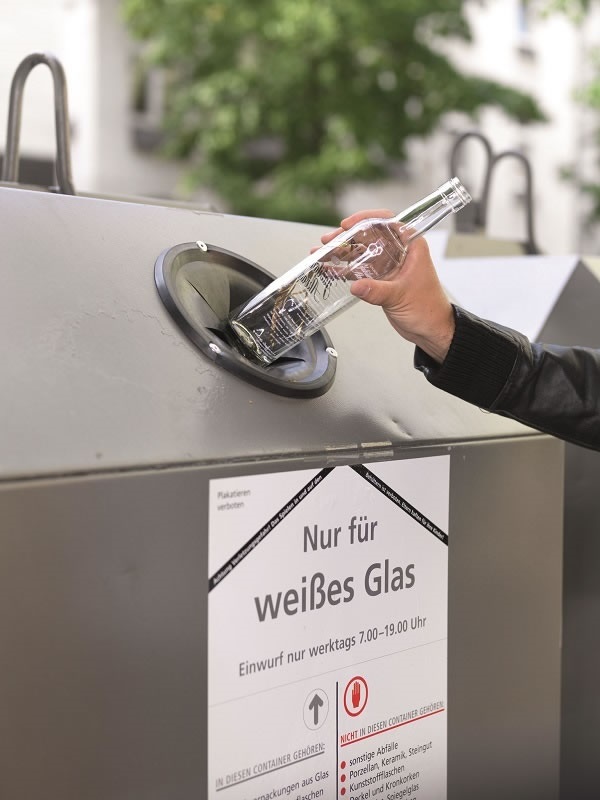
(Photo: glasaktuell)
Glass packaging is therefore not only one of the most hygienic and beautifully designed packaging solutions for drinks, food, perfume, cream and medicine, but also one of the most sustainable in the market.
The latest innovations and unusual designs in the container glass industry can be admired at Messe Düsseldorf's glasstec this coming October. So do please come along – let’s raise our glasses to the glass industry.
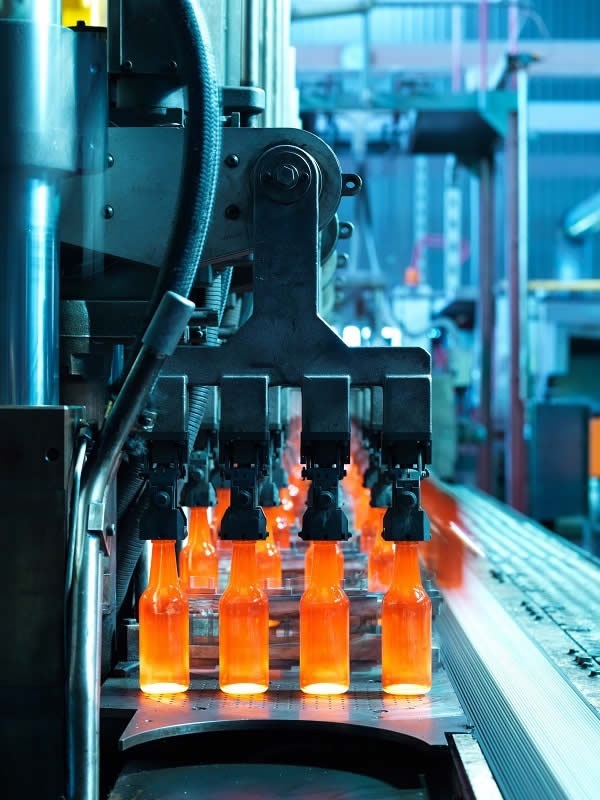
(Photo: Wiegand-Glas)
Claudia Siegele (author)
Born in Stettfeld (Baden) in 1963. Studied architecture at the University of Applied Sciences in Karlsruhe from 1988 to 1994. 1994 to 2004: editor for the German construction industry magazine db deutsche bauzeitung; has run her own architectural studio in Ubstadt-Weiher since 2000. 2004: founded the editorial office frei04 publizistik in Stuttgart together with Dr. Ursula Baus and Christian Holl. Technical author, with books on architecture, civil engineering and energy-efficient construction. Technical journalist and editor for a range of printed and online publications, including Gebäude-Energieberater, greenbuilding and Marlowes. Currently living in Karlsruhe.

